#Productivity strategies
Explore tagged Tumblr posts
Text
Elevate Your Freelance Game with Powerful Productivity Secrets
Many freelancers compare their careers to rollercoasters. It is a career of feasts and famines, of thick and thins, and of good and bad times. There are many pros and cons of freelancing, but for many, owning your own business and making your own hours makes it an ideal career.
To succeed, freelancers must refine their workflows and adopt strategies that help them stay organized, productive, and ahead of the competition. With the right approach, freelancers have fulfilling, sustainable career paths — they thrive on their own terms.
Optimize Your Freelance Workflow with Proven Tools and Techniques
Freelancing offers unmatched freedom and creativity, whether you do it part-time or full-time. But remember, if you want to have more ups than downs, use your downtime to find more work and reinvest in your business.
Freelancing requires juggling multiple responsibilities, from sourcing new work to meeting tight deadlines. Needing to wear so many different hats makes organization a top priority. Adopting techniques that simplify administrative tasks and reduce distractions can create a workflow that keeps you focused and efficient.
Streamline Administrative Tasks
Administrative duties can take up valuable time. Tools like HoneyBook or Trello can centralize client communications, invoices, and deadlines, reducing the mental load. Set aside a specific weekly time to handle invoicing, emails, and other repetitive tasks. That way, your energy stays reserved for creative work.
Another practical tip is to use automation tools like Zapier or Calendly. These platforms can sync your calendar with client meetings, automate follow-up emails, and ensure deadlines don’t fall through the cracks.
Minimize Distractions
Distractions are productivity killers. Stick with routines and boundaries like designated work hours and a dedicated workspace to help maintain focus. And even though working in your pajamas might feel relaxing, it’s often better to hop in the shower and put on comfortable clothes. For an added layer of focus, break your work into 30-minute intervals with short breaks in between. This method enhances focus and also prevents burnout.
Set Clear Goals
A solid workflow requires clear, actionable goals. Use project management tools like Asana or Monday.com to break larger projects into smaller, manageable tasks. Categorize these tasks by priority and deadline to tackle them effectively without feeling overwhelmed.
Advanced Time Management for Freelancers
Time management is critical for freelancers balancing multiple clients and projects; it’s key to achieving an optimum work-life balance. While traditional methods work, advanced techniques can help you manage your schedule more efficiently.
Unconventional Time-Blocking
Time-blocking is a popular method, but you can take it a step further by incorporating themed days or task batching. Assign specific days of the week to focus on specific types of work—such as client outreach, creative tasks, or administrative work.
Alternatively, batch similar tasks together. For instance, set aside two hours to respond to emails and schedule meetings rather than scattering these tasks throughout your day. That minimizes mental switching and saves time.
Avoid Task Fatigue
Freelancers often experience task fatigue when juggling multiple deadlines. To combat this, try the Eisenhower Matrix, a method that categorizes tasks based on urgency and importance. Address critical, high-priority work first while delegating or scheduling less pressing tasks for later.
Prevent Scheduling Pitfalls
Build a buffer into your schedule to handle overlapping deadlines effectively. Avoid over-committing by setting realistic timelines and communicating them to your clients upfront. Finally, seek ways to add more time to your personal schedule; don’t hit the snooze button and limit time on social media.
Master Contract Management and Client Relationships
Solid contracts and client relationships are the foundation of freelance success. Streamlining these areas ensures your projects stay organized, professional, and on track.
Simplify Contract Management
Freelancers often need help managing multiple projects, payments, and expectations. Tools like HelloSign or Dubsado make creating, storing, and tracking this information easy. Use templates to save time and read all agreements carefully. They should clearly outline payment terms, deadlines, and deliverables.
Consider pairing contract tools with project tracking software to make your life even easier. For example, the Notion platform allows you to link contracts to specific projects, creating a one-stop hub for everything related to your work.
Strengthen Client Relationships
Maintaining positive client relationships is vital for retaining work and building a strong reputation. Set realistic expectations at the start of a project and provide regular updates on progress. A quick check-in email can go a long way in keeping clients informed and satisfied.
Prioritize this: Create a curated email list to stay connected with potential, current, and past clients. This tactic helps you maintain relationships and keep your services in mind for future projects. Ongoing, open communication keeps you and your clients aligned, preventing misunderstandings and fostering trust.
Leveraging Productivity Strategies = Better Freelancing Outcomes
Freelancers who adopt these productivity strategies often have more time, less stress, and happier clients. Whether automating repetitive tasks, fine-tuning your time management, or simplifying contract management, these methods can transform your workflow.
We know this is a lot, so start small — pick one or two techniques and implement them this week. You’ll notice enormous business success with just a little effort and consistency.
Katie Brenneman
Katie is a passionate writer specializing in time management, marketing, and education-related content. When she isn't writing, you can find her with her nose buried in a book or hiking with her dog, Charlie. To connect with Katie, you can follow her on Twitter.
Share in the comments below: Questions go here
#freelance#productivity secrets#entrepreneurs#ideal career#workflow#organization#productive#sustainable#workflow management#optimization#simplify administrative tasks#reduce distractions#set clear goals#project management tools#asana#monday.com#time management#time blocking#task fatigue#scheduling pitfalls#communications#client relationships#contract management#better freelancing outcomes#productivity strategies
0 notes
Text
Boost Your Productivity with These Tools
Boost your business productivity with these 10 must-have tools! From Trello to Slack, learn how to streamline your operations and save time with the best apps.
Boost Your Productivity with These Tools Written By: that Hannah Jones Time to Read: 7 minutes Running a business or managing a team is no small feat, especially when juggling multiple tasks, projects, and deadlines. With so much to manage, productivity tools are no longer just “nice-to-haves”—they’re essential for keeping your operations streamlined and efficient. Whether you’re looking to…
#app integration tools#Asana project management#automation tools for business#best productivity apps#best tools for entrepreneurs#business apps for entrepreneurs#business efficiency tools#business growth tools#business workflow tools#digital productivity apps#Evernote for note-taking#Google Workspace tips#improving business efficiency#Monday.com workflows#Notion for knowledge sharing#productivity hacks#productivity strategies#productivity tools for business#project planning tools#RescueTime focus app#Slack for communication#small business tools#task management apps#team collaboration apps#time management software#time tracking tools#tools for entrepreneurs#tools for remote teams#Trello for project management#Zapier automation
0 notes
Text
Tumblr’s Core Product Strategy
Here at Tumblr, we’ve been working hard on reorganizing how we work in a bid to gain more users. A larger user base means a more sustainable company, and means we get to stick around and do this thing with you all a bit longer. What follows is the strategy we're using to accomplish the goal of user growth. The @labs group has published a bit already, but this is bigger. We’re publishing it publicly for the first time, in an effort to work more transparently with all of you in the Tumblr community. This strategy provides guidance amid limited resources, allowing our teams to focus on specific key areas to ensure Tumblr’s future.
The Diagnosis
In order for Tumblr to grow, we need to fix the core experience that makes Tumblr a useful place for users. The underlying problem is that Tumblr is not easy to use. Historically, we have expected users to curate their feeds and lean into curating their experience. But this expectation introduces friction to the user experience and only serves a small portion of our audience.
Tumblr’s competitive advantage lies in its unique content and vibrant communities. As the forerunner of internet culture, Tumblr encompasses a wide range of interests, such as entertainment, art, gaming, fandom, fashion, and music. People come to Tumblr to immerse themselves in this culture, making it essential for us to ensure a seamless connection between people and content.
To guarantee Tumblr’s continued success, we’ve got to prioritize fostering that seamless connection between people and content. This involves attracting and retaining new users and creators, nurturing their growth, and encouraging frequent engagement with the platform.
Our Guiding Principles
To enhance Tumblr’s usability, we must address these core guiding principles.
Expand the ways new users can discover and sign up for Tumblr.
Provide high-quality content with every app launch.
Facilitate easier user participation in conversations.
Retain and grow our creator base.
Create patterns that encourage users to keep returning to Tumblr.
Improve the platform’s performance, stability, and quality.
Below is a deep dive into each of these principles.
Principle 1: Expand the ways new users can discover and sign up for Tumblr.
Tumblr has a “top of the funnel” issue in converting non-users into engaged logged-in users. We also have not invested in industry standard SEO practices to ensure a robust top of the funnel. The referral traffic that we do get from external sources is dispersed across different pages with inconsistent user experiences, which results in a missed opportunity to convert these users into regular Tumblr users. For example, users from search engines often land on pages within the blog network and blog view—where there isn’t much of a reason to sign up.
We need to experiment with logged-out tumblr.com to ensure we are capturing the highest potential conversion rate for visitors into sign-ups and log-ins. We might want to explore showing the potential future user the full breadth of content that Tumblr has to offer on our logged-out pages. We want people to be able to easily understand the potential behind Tumblr without having to navigate multiple tabs and pages to figure it out. Our current logged-out explore page does very little to help users understand “what is Tumblr.” which is a missed opportunity to get people excited about joining the site.
Actions & Next Steps
Improving Tumblr’s search engine optimization (SEO) practices to be in line with industry standards.
Experiment with logged out tumblr.com to achieve the highest conversion rate for sign-ups and log-ins, explore ways for visitors to “get” Tumblr and entice them to sign up.
Principle 2: Provide high-quality content with every app launch.
We need to ensure the highest quality user experience by presenting fresh and relevant content tailored to the user’s diverse interests during each session. If the user has a bad content experience, the fault lies with the product.
The default position should always be that the user does not know how to navigate the application. Additionally, we need to ensure that when people search for content related to their interests, it is easily accessible without any confusing limitations or unexpected roadblocks in their journey.
Being a 15-year-old brand is tough because the brand carries the baggage of a person’s preconceived impressions of Tumblr. On average, a user only sees 25 posts per session, so the first 25 posts have to convey the value of Tumblr: it is a vibrant community with lots of untapped potential. We never want to leave the user believing that Tumblr is a place that is stale and not relevant.
Actions & Next Steps
Deliver great content each time the app is opened.
Make it easier for users to understand where the vibrant communities on Tumblr are.
Improve our algorithmic ranking capabilities across all feeds.
Principle 3: Facilitate easier user participation in conversations.
Part of Tumblr’s charm lies in its capacity to showcase the evolution of conversations and the clever remarks found within reblog chains and replies. Engaging in these discussions should be enjoyable and effortless.
Unfortunately, the current way that conversations work on Tumblr across replies and reblogs is confusing for new users. The limitations around engaging with individual reblogs, replies only applying to the original post, and the inability to easily follow threaded conversations make it difficult for users to join the conversation.
Actions & Next Steps
Address the confusion within replies and reblogs.
Improve the conversational posting features around replies and reblogs.
Allow engagements on individual replies and reblogs.
Make it easier for users to follow the various conversation paths within a reblog thread.
Remove clutter in the conversation by collapsing reblog threads.
Explore the feasibility of removing duplicate reblogs within a user’s Following feed.
Principle 4: Retain and grow our creator base.
Creators are essential to the Tumblr community. However, we haven’t always had a consistent and coordinated effort around retaining, nurturing, and growing our creator base.
Being a new creator on Tumblr can be intimidating, with a high likelihood of leaving or disappointment upon sharing creations without receiving engagement or feedback. We need to ensure that we have the expected creator tools and foster the rewarding feedback loops that keep creators around and enable them to thrive.
The lack of feedback stems from the outdated decision to only show content from followed blogs on the main dashboard feed (“Following”), perpetuating a cycle where popular blogs continue to gain more visibility at the expense of helping new creators. To address this, we need to prioritize supporting and nurturing the growth of new creators on the platform.
It is also imperative that creators, like everyone on Tumblr, feel safe and in control of their experience. Whether it be an ask from the community or engagement on a post, being successful on Tumblr should never feel like a punishing experience.
Actions & Next Steps
Get creators’ new content in front of people who are interested in it.
Improve the feedback loop for creators, incentivizing them to continue posting.
Build mechanisms to protect creators from being spammed by notifications when they go viral.
Expand ways to co-create content, such as by adding the capability to embed Tumblr links in posts.
Principle 5: Create patterns that encourage users to keep returning to Tumblr.
Push notifications and emails are essential tools to increase user engagement, improve user retention, and facilitate content discovery. Our strategy of reaching out to you, the user, should be well-coordinated across product, commercial, and marketing teams.
Our messaging strategy needs to be personalized and adapt to a user’s shifting interests. Our messages should keep users in the know on the latest activity in their community, as well as keeping Tumblr top of mind as the place to go for witty takes and remixes of the latest shows and real-life events.
Most importantly, our messages should be thoughtful and should never come across as spammy.
Actions & Next Steps
Conduct an audit of our messaging strategy.
Address the issue of notifications getting too noisy; throttle, collapse or mute notifications where necessary.
Identify opportunities for personalization within our email messages.
Test what the right daily push notification limit is.
Send emails when a user has push notifications switched off.
Principle 6: Performance, stability and quality.
The stability and performance of our mobile apps have declined. There is a large backlog of production issues, with more bugs created than resolved over the last 300 days. If this continues, roughly one new unresolved production issue will be created every two days. Apps and backend systems that work well and don't crash are the foundation of a great Tumblr experience. Improving performance, stability, and quality will help us achieve sustainable operations for Tumblr.
Improve performance and stability: deliver crash-free, responsive, and fast-loading apps on Android, iOS, and web.
Improve quality: deliver the highest quality Tumblr experience to our users.
Move faster: provide APIs and services to unblock core product initiatives and launch new features coming out of Labs.
Conclusion
Our mission has always been to empower the world’s creators. We are wholly committed to ensuring Tumblr evolves in a way that supports our current users while improving areas that attract new creators, artists, and users. You deserve a digital home that works for you. You deserve the best tools and features to connect with your communities on a platform that prioritizes the easy discoverability of high-quality content. This is an invigorating time for Tumblr, and we couldn’t be more excited about our current strategy.
65K notes
·
View notes
Text
AI Automation Workflow-Productivity
AI workflow automation is transforming the way businesses operate. By integrating artificial intelligence into your workflows, you can automate repetitive tasks, enhance efficiency, and free up your team to focus on strategic priorities. Benefits of AI Workflow AutomationImplementing AI Workflow Automation: Expert TipsStart Small and ScaleFocus on User AdoptionPrioritize Data QualityExamples of…
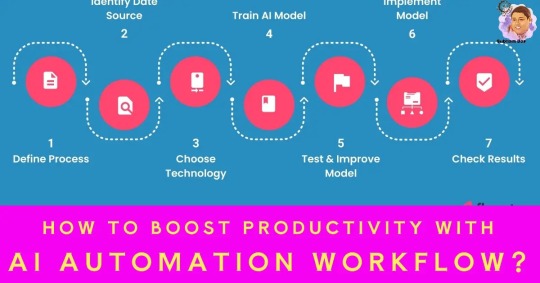
View On WordPress
#artificial intelligence#automation#productivity#AI automation#workflow automation#productivity hacks#automation tools#productivity tips#AI tools#workflow efficiency#business automation#time management#productivity strategies#AI in business#automation trends#AI productivity#tech automation#AI software#productivity apps#digital transformation#automation benefits#work smarter#AI integration#efficiency tips#automation solutions#AI workflows#AI trends#business productivity#tech productivity#AI optimization
0 notes
Text
And now I remember why I haven't touched Blindsiding Badgermoles in months.
*stares at "outline" which is more like "aftermath of how-much-can-we-fit-in-one-chapter explosion"*
Oh boy.
#I can see Past Me's vision#I can ALSO see that Past Me's plan was Let Future Me Figure It Out#hey Past Me get back here I just want to TALK#blindsiding badgermoles#blind!Zuko#avatar the last airbender#atla#this is going to take hours to untangle#but I want to untangle my Serious Face Novel's next chapter even less#ultimate writer strategy of ultimate productivity: procrastinate on your writing by cheating on it with OTHER WRITING
173 notes
·
View notes
Text
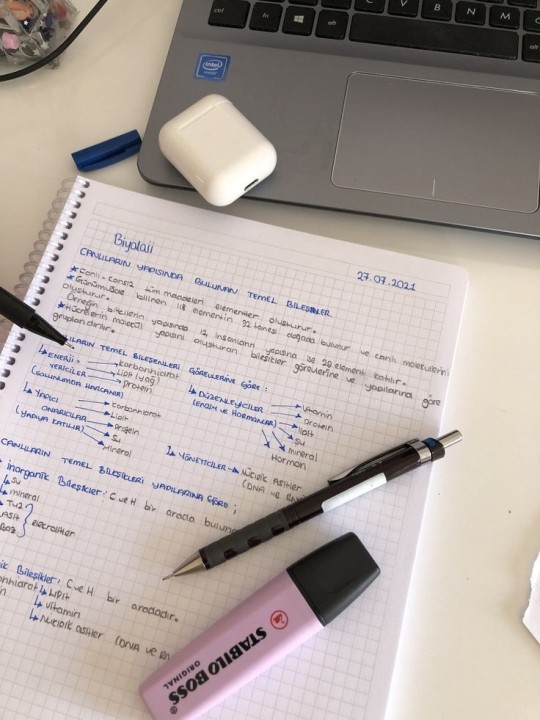

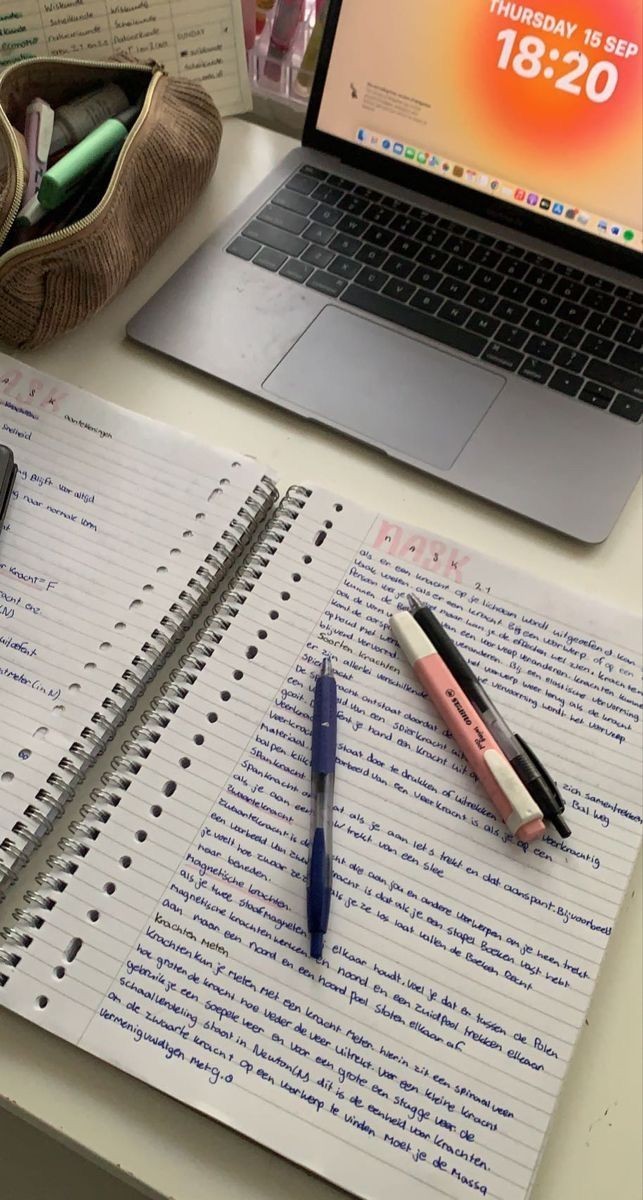
❥﹒♡﹒☕﹒ 𝘁𝗶𝗺𝗲-𝗺𝗮𝗻𝗮𝗴𝗲𝗺𝗲𝗻𝘁 𝘀𝘁𝗿𝗮𝘁𝗲𝗴𝗶𝗲𝘀 𝘆𝗼𝘂 𝗺𝗮𝘆 𝘄𝗮𝗻𝘁 𝘁𝗼 𝗸𝗻𝗼𝘄
𝟭. set SMART goals ( 📒 )
make sure your goals are specific, measurable, actionable, realistic and time-bound. this will help you maintain focus and track your progress over time. how many times has it been you and your unrealistic to-do list against the world? well, it seems that a mile-long to-do list is not a good ally at all. remember that you are a person and not a machine, and that just dedicating four hours to deep work and concentration is A LOT. be kind to yourself and don't overload yourself with more work than you can humanly do.
𝟮. daily planning ( 🧸 )
mea culpa because i'm the first one who doesn't plan their day. to-do lists generally stress me out and make me feel overwhelmed as if i don't manage to complete all the tasks an asteroid will end up hitting the earth. but i recognize that it is a good starting point. sometimes i have too many things to do and i end up doing nothing in total confusion, but having at least a general list to follow gives me more motivation. moreover do we want to talk about the dopamine released when you tick an empty box? marvelous. maybe don't write down tasks that are too onerous and demanding, break them into several smaller tasks, also try to write simple activities such as "drink a glass of water" every now and then. having these low-commitment activities will help you stay motivated while completing more important tasks.
𝟯. reverse-engineering method ( 🪴 )
start with the end goal and work backwards to plan the actions needed to achieve it. this helps you maintain clarity on the steps to take and focus on the most relevant actions. the best thing to do is plan based on the time available and do your best to stick to your daily goal.
𝟰. timer roulette ( ⏳ )
choose a task from your to-do list and set a random timer between 15 and 45 minutes. work on that task with all your concentration until the timer goes off. this helps you fight procastination and keep your mind fresh.
𝟱. mind mapping time ( 📍 )
before starting a study session, take a few minutes to create a mental map of the subject you need to cover. this helps you see connections between concepts and organize information more effectively.
𝟲. task batching ( 🫒 )
group similar tasks together and tackle them in batches. for example, reply to all emails in one session rather than doing so at scattered times throughout the day. this helps you reduce transition time between tasks and maintain focus. contrary to popular belief, human beings are not truly multitasking (only a few possess this great ability) and when we do multiple things together we do nothing but shift our attention from one task to another, greatly reducing the quality of our performance. if possible, try to avoid these switches that are harmful to your focus and concentration.
𝟳. the pomodoro method ( 🍅 )
okay, y'all probably already know this one because it became so popular in the last year but if you don't, the pomodoro method is a time management technique developed by francesco cirillo in the late 80s. it is based on the idea of working for short periods of time, usually 25 minutes, followed by a short 5 minute break. after four rounds of work, a longer break is taken, usually 15-30 minutes. this technique helps improve concentration and productivity, as it breaks down work into manageable tasks and offers regular breaks to rest and regenerate energy. i personally prefer the 50/10 ratio while i'm studying but you decide which time ratio is better for you, i find it really useful and it helps me a lot while i'm studying for my exams.
#college#education#school#academia#note taking#student#study aesthetic#study blog#study inspiration#study motivation#study notes#study space#study tips#student life#study community#studyblr#studyinspo#studyspo#uni student#academic validation#chaotic academia#light academia#dark academia#university life#university#uni life#time management#time management strategies#pomodoro method#productivity
347 notes
·
View notes
Text
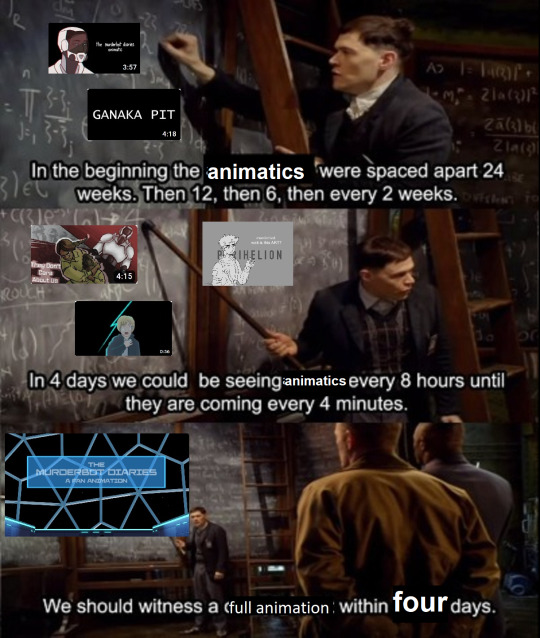
Yeah, that's right, the Murderbot Diaries fandom is full of incredible talent and brilliant artists, and we're only dropping cooler and more talented stuff with time.
Can't wait for the Murderbot Diaries Fan Animation to drop this Friday? To tide you over, we're featuring some of the show-stopping animatics that went down in fandom history before us:
I'm Not Your Hero - The Murderbot Diaries Animatic by mar @souldagger
Ganaka Pit // Relax (Take it Easy) by Kes Beacon @kesbeacon
Murderbot Diaries: Exit Strategy Spoilers by MonnieBiloney[Art] @monniebiloney
murderbot crack by @broken-risk-assessment-module
They Don't Care About Us | Fugitive Telemetry by thymia @alex-van-gore
And finally, bringing together many of the previous incredible artists onto our team, is the Murderbot Diaries Fan Animation Project. Watch this space!
#mbfanimationproject on Tumblr | Instagram | YouTube
#mbfanimationproject#Murderbot#the Murderbot Diaries#Martha Wells#animation#fanart#murderbot fanart#All Systems Red#Artificial Condition#Rogue Protocol#Exit Strategy#watch this space#production meme
704 notes
·
View notes
Text
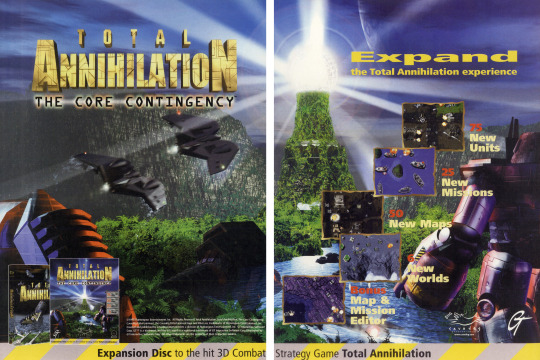
UK 1998
#UK1998#HUMONGOUS ENTERTAINMENT LTD.#CAVEDOG PRODUCTIONS#STRATEGY#IBM#TOTAL ANNIHILATION#TOTAL ANNIHILATION THE CORE CONTINGENCY
37 notes
·
View notes
Text
How to use time efficiently with many interests and work commitments.
⋅•⋅⊰⋅⋅•⋅∙∘☽༓☾∘∙•⋅⋅⋅•⋅⋅⊰⋅•⋅⋅•⋅∘☽༓☾∘∙•⋅⋅⊰⋅•
Being productive, making the most of the 24 hours of our day and getting a high ROI back is your goal, but your daily schedule and the endless appointments that you have make you too tired to get work done, let you feel like you have no free time, no time to even study, and you have to spend countless all nighters to get your work done questioning yourself why you chose so many activities/ extracurricular's etc. in the first place and all the free time you have your essentially doomscrolying it away making you more unmotivated.
This is a guide on how you can use your time efficiently and get a huge ROI back without feeling exhausted/tired and finding enough time to study thoroughly, getting your work done without loosing your passion for other things and doing your hobbies.
So the first thing you have to do is to go to a regular week and observe when you have free time, when you are binge-watching shows, doomscroll or when you are so unmotivated that you don't want to do your work, study, do your homework etc. and also what tasks do you have when you go to work/school when you come back, clubs meetings etc. So everything you do regularly in the week
Lastly in this week you have to identify a Prime time where you are the most productive so you can plan your tasks around it.
A list can look like this:
Observation
Monday: Going home from work/school at 16:30 - one hour free time - until I have to go to extracurriculars/ course etc.
Tuesday
Wednesday
….
Prime time: Weekdays 10-12pm Weekend 9-12am
₊˚ ‿︵‿︵‿︵୨୧ · · ♡ · · ୨୧‿︵‿︵‿︵ ˚₊˚ ‿︵‿︵‿︵୨୧ · · ♡ · · ୨୧ ₊˚
So, after you got the times where you are doing nothing/ wasting your time you have to start listing all the tasks and events you have, then categorize them based on importance and urgency.
For this you can use the Eisenhower-matrix
where you organize your work and projects into four categories: Important and Urgent, Important but Not Urgent, Urgent but Not Important, Not Urgent and Not Important.
The Eisenhower matrix, also known as the Urgent-Important matrix, is a time management strategy that helps you prioritize tasks based on urgency and importance.
The matrix has 4 quadrants or sections:
Important and Urgent: These tasks need immediate attention.
Important but not urgent: These are high priority items.
Urgent but not important: These are things that are time-sensitive but can often be delegated.
Not urgent and not important: These are activities that can either be delayed or removed from the list entirely.
example:
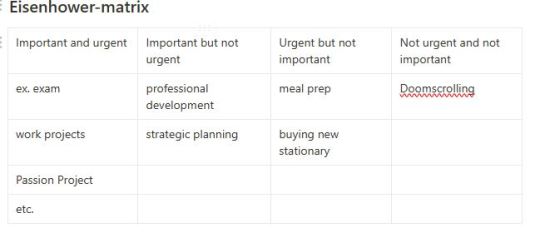
Planning your week in a strategic way
First you should Collect your observations in a 24 hours weekly planner like this and highlight the free time zones you have and also plan your regular sleeping time mine is from 10 to 5:30 am
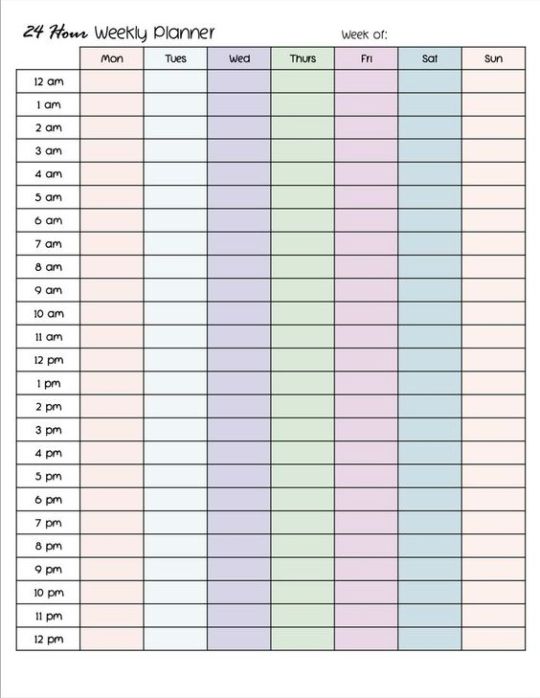
How to fill the free-spots:
Start by allocating time for high-priority tasks, then move on to lower priority ones, and finally use remaining time for recreation.
Place the high priority task in the (near the) prime time
If there are regular recurring tasks like homework hobbies etc. you should put it in a designated time slot
Try to avoid overworking yourself and prioritize your mental health.
Remember to take breaks in between tasks and give yourself a reward after completing something difficult or time consuming.
It's basically time blocking which is a method where you divide and schedule your day into focused intervals with no distractions
How to do the most in the weekend
After such a full week doing all your tasks you're obviously going to be tired and unmotivated to do anything. But the workload isn't going to get smaller but bigger in the next week, so you have to at least get something done. But do not force yourself to be 100% productive in the weekend because we all need some rest and constantly overworking yourself is unhealthy and also doesn't give you a good ROI in the long run.
Here are some methods that I've tried categorized in three levels: high; medium and low level depending on the mood you're in.
High level methods
The first method I suggest you to do is a method that is called Batch Tasking by Grouping
With this technique, you group similar tasks together and complete them in batches.
For example, you can have a morning batch of 'work-related tasks', an afternoon batch of 'personal tasks', and an evening batch of 'leisure tasks'.
This method can be useful for individuals who are motivated by completing multiple similar tasks at the same time, and it helps to avoid task switching and maintain a clear sense of purpose in your workflow.
The second method is the the "Marathon Mindset" technique
It's a method where you set a specific amount of time, say 3-4 hours, to focus intensely on completing your tasks. During this time, you can take short breaks (around 10 minutes) to prevent burnout, but the focus is on maintaining a steady work rate for the entire duration.
This technique can help you complete difficult tasks, and it's excellent for individuals who get into a 'flow' state when working on a project.
Medium level methods:
time boxing
This involves setting a timer for a specific amount of work, and once the timer goes off, you move onto the next task, no matter how much work was done. This helps create a sense of urgency and focus.
Time Boxing and Activity Swapping technique
Here, you set a short amount of time, say 15 minutes, for each task you want to complete. Once the timer goes off, you take a 5 minute break before moving onto the next activity.
But here's where it gets different: Each time you finish a task, you swap to a completely different activity than the last one. For example, after writing an email, you could do some calisthenics, then after that some cleaning, and so on.
This technique is great for individuals who struggle with task boredom
Low level methods
Focus on your "1 Thing"
it means working on the most important task each day, the "one thing" that'll move you closer to your goals. Once you've completed that 'One Thing' you can move onto the next.
This technique will help you to avoid multitasking and stay motivated, focusing your energies on completing the most crucial tasks first
Focus Sprint and Rest
Here, you work in intense 15-minute sprints, followed by a short 5 minute break. You repeat the routine 2-4 times before taking a longer break of around 15-30 minutes.
You can alternate between tasks or stay focused on one, depending on your preferences. This method is great for individuals who prefer shorter bursts of intense work, with short but regular breaks for a quick boost in energy.
Priority Power Hour
Using this technique, you dedicate a specific time of day, say 1 hour, to working on your most important and difficult tasks. Optimally this should be your power hour During this power hour, you commit to nothing else except completing these high-priority tasks.
The rest of your day can be spent doing less important tasks or working on other passions. The key benefit of this technique is that it allows you to stay focused and productive during your most efficient times of the day, while avoiding burnout.
Some last general tips
First, you should set achievable goals. This means breaking big tasks into small ones. This is very helpful if you have a big project that you have to do because the task load doesn't overwhelm you as much when you break aspects e.g. research as doing the whole project in a couple days and being very stressed.
Then you should limit distractions like your mobile etc. I would pack those things to another room so that they are not in front of your eye which makes you less likely to use them and get distracted. Also you should try to minimize multitasking because it diverts your attention on too many tasks and topics which makes your work imprecise and actually costs more time because you have to get into the thought process of topic 1 again.
Start with the end in mind. Define what you want to achieve during your sessions. Having clear goals helps you stay focused.
It's also important to schedule short breaks in the work session especially if you have many things to do to prevent burnout.
You should also have a monthly overview of important tasks separatly in a calendar
Regularly review your time management strategies and adjust them as needed. What's working? What needs improvement?
Lastly you should give yourself some rewards if you completed a difficult and important task to make you more motivate for more tasks
#wonyoungism#girlblogging#pink academia#becoming her#becoming that girl#girl blogger#pink pilates princess#productivity#time management#studyblr#productivitytips#productivityboost#productivity challenge#timemanagement#advice#that girl#dream girl essence#notion#time management strategies#dream girl#How to be NOT STRESSED out if you have a full plan#studyspo#literally me𓈒ㅤׂㅤ𐙚 ࣪ ⭒#Let's get productive Y'all#it girl energy#academic weapon#academic barbie#self improvement#self development#management
33 notes
·
View notes
Note
can you elaborate more on the point from the product strategy about supporting creators, showing their posts to more people and increasing engagement? i think most users are under the impression that the only way to make a social media algorithm is exactly like tiktok's, which only rewards the most popular creators, accounts that post extremely often, etc. are you actually looking to boost less popular accounts and increase engagement, or just proliferate the same sort of algorithm all over the website?
Answer: Hello, @barbieharrington!
We are looking to give a limited amount of extra exposure of new posts to a wider audience. Right now, if you’re new to Tumblr and create a post, there’s a high chance it will never be seen by someone else. And thus, as a new creator on Tumblr, it can be difficult to find an audience.
We’d like to make it slightly easier by giving these creator’s posts a little extra exposure, in the hope that those posts find their way to people that will love them—and perhaps even reblog and follow. This can help encourage creators to continue posting great content for all of us to enjoy. Existing creators with a large number of followers don’t have this problem, as all of their posts are likely going to be seen by many people already.
In addition, we are also exploring features and tools to help creators, and we are excited to tell you more about this as and when we can.
Thanks for your question—this is an important point to address, and we’re grateful you asked.
Best,
—Eli and Marina
133 notes
·
View notes
Text
“do the hardest task first”
no. just… no.
hot take: this doesn’t work for people with adhd (in my experience/from what i’ve heard from other people with adhd in my life). i recommend doing the easy/moderately difficult stuff first, that way you can convince yourself that it’s all going to be this easy and undemanding. then hyper-focus will kick in because your brain is like, “yeah, we can do this, we’ve got this.” then, before you know it, you’ve completed both the easy tasks and the hard tasks while hyperfocusing.
like, on a serious note, it’s always been easier for me to convince myself to get the most difficult tasks done when i’m already working/in the working frame of mind, not when i’m laying in bed or sitting on the couch, mindlessly scrolling through stuff on my phone, and struggling to start at all.
if the choice comes down to you not starting at all or starting with the easiest task first (which, for me, it often does), always, always pick starting with the easiest task first. sometimes you need a small victory, a little bit of an accomplishment, to give you the courage to take on bigger challenges.
#adhd#audhd#in my experience… ‘study tips’ or ‘time management tips’ from neurotypical people will almost never work for us#they don’t conceptualize time the same way we do#they don’t look at challenges the same way we do#it’s okay to take bits and pieces of their advice#ya know… whatever parts of it work for you#but don’t think that you have to use all the strategies and programs that they do to be successful#because you don’t#all that fake business soft skills/mental health guru/grind mindset stuff is total bullshit#pick strategies that speak to/work for you#it’s okay to fail at things and to have to try again#it’s okay to make mistakes and not get shit done sometimes#sometimes you need a fucking break#it’s okay to start with the easy stuff first and just ease your way into being productive#it’s okay to hyperfocus and work for hours on end sometimes#if it’s hard for you to take breaks when you’re studying and you feel like you learn better if you stay in that hyperfocused zone#than just go until the hyperfocus wears off#then take a break… eat… nourish your body… take care of yourself… and come back later#maybe later is later on that day#maybe later is tomorrow#either way is completely fine#do what works best for you#work with your neurodivergent brain… no against it#pol’s diary <3
107 notes
·
View notes
Text
demi/puck at wc but like. specter of lotte right
#avoiding being productive by kopeckeringing god bless. but i’m Thinking#going back to this article ab demi responding to lotte questioning the dutch team’s leadership and if they really had a proper strategy#and it bring’s up a quote from puck saying that it makes the rest of the team more confident knowing demi is so strong#like AUGH. also the two of them getting closer in paris… puck being a little shell shocked over beating Demi Freaking Vollering on stage 4#but the journalist bringing up puck’s quote like ammo for demi’s side of things…. getting w someone like a post breakup Fuck You#and not even like she’s using puck to get over lotte or even thinking she’ll notice but it’s like an I Moved On sort of thing#like she’s soooo unbothered! she’s Fine!!!#also puck did seem a little starry eyed w/ demi#being not only new to road but having her first win be against the literal best in the world and to have her sing your praises to the media#PLUS THAT CLIP OF THEM TALKING POSTRACE WHERE DEMI’S LIKE “ahh you won” and the first thing puck does is go in to hug her 😭😭#like i would be having a girlcrush too fr. not to mention demi vollering looks like demi vollering soo.#idk i feel like demi is someone puck respects/admires a lot and to have someone like that like you… no better way to be absolutely taken#so whatever happened w lotte puck’s automatically gonna be on her side and it’s nice to have someone tell you no you’re right they suck#in a breakup. even if she feels split about it if puck’s there to be like fuck them demi you’re better!! it’s sort of like a tether right#everyone needs a friend(?) to hate on your ex 😌😌 and maybe they’re a little in love with you#it’s just easier to be with someone who likes you that much with no caveats as opposed to something more complex but also an emotional mess
11 notes
·
View notes
Text
I've seen a few posts about attempting economical freezes or boycotts and would like to offer an alternative, one which won’t inherently pit us against each other.
There's a style of protest that let everyday fellows continue, getting groceries, medications, entertainment, whathaveyou, all while preventing economic flow. If the buses don’t show up, the bosses won’t care, they have other busses, but if the busses don’t charge? If every grocery item is scanned and bagged, but the transaction canceled of falsely cashed (when you type in the cash and then just put nothing in), your CEOs will care. The customers will be happy, thrilled even! It's a great way to get the eternal fence sitters to side with you!
Like with other protests, it only works in numbers. You're a lot more likely to get fired over not showing up versus not doing one part of your job (the part they actually care about). But it's also a model unlikely to make your coworkers resent or act against you in spite, as leaving them out to dry by a walkout doesn’t stop the company from making money, it just makes it a harsher grind against the workers who couldn’t afford not showing up (some need every penny to live).
I have no doubt that there won’t be many protests in my area, this is Trump land with the occasional KKK and religious fanatics screaming about hell in public. My hope is that protestors of neighboring or different counties consider this as an option.
(Mostly I've been thinking about how people like to act out against a company by harassing or disregarding the workers, like those hacks who refuse to put their carts away ‘in protest’. Hun, if you really wanted a protest you'd have taken pliers to the frame until it was unusable, or just shoved the whole thing in your car.)
TLDR: Want a cool protest method where you bite into companies? You get rid of their stuff. If you can’t break it, then give it for free. Walkouts leave companies’ merchandise untouched; handouts or refusing to take payment gets CEOs worried FAST.
#Food for thought#protest#2025#boycott#what would this be cinsidered as a form of protest?#People are going to pay for uners amd food regardless; they need that shit#We can’t tell them to go hungry because they won’t.#Unless you can get EVERYONE on board#Or you skip the oretenses amd use the red fucks' strategies against them#Then you need to make your protest appealing to#those who would otherwise ruin your efforts.#This model has been used by busses and hospitals before#with rapid success#(Though I do kinda feel lile Amazon warehouses should freeze…#But then the products would still be accounted for; Musk would go unaffectd
7 notes
·
View notes
Text

text : the overarching storyline and the conclusion of Link Click are already decided.
ik I'm not surprised but is this what the Calvinists mean when they talk about the theory of predestination?
#my heart#i wish i watched link click after it was totally over#binge watch and then come to the fandom to discover things slowly#sigh#thats why you should not watch high quality productions unfinished#my older anime watching strategy was WAY better#bro post banana fish trauma made me google is this happy ending? before watching any freaking thing#HONESTLY SPEAKING CHENG XIAOSHI AND LU GUANG NOT GETTING AN HAPPY ENDING WILL MAKE EVERYTHING VERY MEANINGLESS ACTUALLY LIKE IT STARTED#and came back to the same point#eh#ok#link click#shiguang daili ren#lu guang#shiguang#cheng xiaoshi#yingdu chapter#时光代理人#bridon arc#donghua
12 notes
·
View notes
Text
oops! i did it again. lessons from this school year...


Hey, you remember that post I made about my winter term priorities? HAHAHAHAHahaha ha ha. That plan totally went to shit, but it's all part of the journey, right? 😅 (Tbh, it's quite difficult to make a conscious effort to change yourself when the default response to being and feeling busy is to go on autopilot -> all the unconscious habits, even if unhealthy, take control, and bc it's unconscious, you don't realize it until it gets quite bad! anyway! no more! my future plans make it so this will be impossible to do while still retaining some sense of sanity. so to prep, we're gonna slowly implement little changes so hopefully it's not so overwhelming that i give up)
🧘🏻♀️ comparing mindsets in fall and winter term
Fall term was not that bad bc I had 2 STEM subjects I really really loved and was interested in (biochem and mol bio 💕), and despite their difficulty, that love and interest and the feeling that "I am in the right field for me" kept me positive. There were times I thought I would feel burnout symptoms if I wasn't careful, but I really think that positivity protected me from the worst of it.
Winter term, however...I had one favorite subject: moral philosophy, which led to me wistfully dreaming about an AU in which I double majored in philosophy and piano performance, lol. After the highs of biochem and mol bio and the natural ease with which the bits of info flowed together in those subjects, I did not enjoy pharmacology or the 2nd half of psyc as much -> loss of interest -> negativity and feeling like I'm in the wrong field bc how dare I not like pharmacology (or psychology) as much as the other life science-y subjects when it's really so important for us to survive and thrive! 😅 I mean, there were times I could get that spark from pharmacology or psyc, but it wasn't often enough or intense enough to keep me consistently inspired throughout the semester. The feeling of "maybe I don't have what it takes and I'm in the wrong field" was compounded by the re-realization that there's sm to know of bioinformatics and I struggle to know any of it! Persevering is important, but it's harder to persevere with a negative mindset.
😤 what went wrong this school year and what i learned from it
I still struggle with perfectionism (and bc of it, procrastination). While it might not be as bad as it was in high school, I still spent too long on assignments that weren't worth much and during finals season, was so scared of getting less than 90% just to keep up my A+ streak. Like, I'm pretty sure no one who cares to know your GPA cares about whether you have an A+ streak or not. I have too high a threshold for what is a "disappointing" grade. I also struggle with deep regret about how I haven't mastered everything they throw at us in each course... definitely an unrealistic expectation, especially as the proportion of new info to absorb increases with each course. I did what I could using what I knew to do, so it is what it is. I may find ways to make improvements and learn more, but I won't beat myself up for not having known to do those things in the past.
Did not use effective study methods. Since first year, my problem has been keeping up with the readings and my solution has been to just use typed outline notes. It worked for the first few years when it was mostly review from previous courses with a few new concepts in between. But as I progress through my degree, the proportion of completely new info is increasing. This notetaking method won't work anymore bc it just causes cognitive overload, especially during exam season (when I've mostly forgotten the details of everything that isn't smth I've already known for years). E.g. for pharmacology, I got so bogged down by the details of all the drug classes that I didn't see the big picture and so didn't organize the info according to it. This made it hard to see patterns and better chunk the info. I was so stressed during finals season bc of this (and the sheer amount of notes that I had to read for psyc 😭). What makes it feel like even more of a problem is that the cognitive overload problem from my notetaking method has been a thing for all other uni courses thus far, it's just that pharmacology was the first time I needed to create a stronger connecting thread between the otherwise disparate pieces of info (drug classes). In all other courses, that thread was part of the nature of the topic being studied so I eventually understood it as I kept going and mentally re-organized it in my brain...but even then it was hodge-podge and so my depth of mastery was and is so flimsy, and every semester I leave feeling drained and like I wasted the opportunity to maximize my learning. (How dramatic I get about this is also probably tied to my perfectionism, but I still think it would greatly benefit future me to change my notetaking style.)
🎓 advice for future me
Look at the academic calendar, specifically the faculty course descriptions. Look at how many hours they say you should expect to spend on each activity in the course. Try to use those learning hours as a guide for your schedule so that you don't spend too long on an item that isn't worth much. If there isn't such a breakdown, assume one based on whatever they give you or other courses and adjust from there.
Be a more efficient reader by skimming the text first so you can map the flow of info in a way that best creates ease of understanding/synthesis/memory (e.g. via an outline, tree diagram, flowchart, mind map, or simple drawings - and noticing when a list/outline will NOT be helpful bc it'll just be too overwhelming and not easy to compare/contrast info and see patterns). I knowww you've survived thus far without doing it this way and done well, BUT with this many courses, the increasing complexity of each subject, and the overload of info in each, you WILL need to do this to make quicker work of the readings, save you sooo much stress during exam seasons, and improve how much you learn while in school which is the real goal you've wanted to achieve all this time. Don't repeat the mistake you made in pharmacology. And it really doesn't have to be aesthetic and you definitely should NOT get caught up with it if you really wanna learn. You could just use one color for everything and a highlighter and just basic shapes/lines - that alone can be way more effective than boring paragraphs/lists or a colorful, overly complex diagram that'll just distract you from the main point.
Create a realistic daily routine (wake-up and sleep times, start and end times for schoolwork) and be strict about following it. Set your non-negotiables for personal goals to keep up with alongside your schoolwork bc academics aren't everything. Remember how you regretted not devoting more time to extra-curriculars and other skills in high school which would've rounded you out as a person. You can try theming the parts of the day so that you don't have to think about what task you should do first after study breaks and keep up the momentum (e.g. mornings for readings and notes, afternoons for active recall/homework). Then you can live the rest of the day after school as structured or unstructured as you wish. If this strategy doesn't work for you, you don't have to use it.
Take advantage of interleaving so you don't get bored. Whether by following the theming strategy or just switching subjects every hour, idc if you aren't done yet, you better switch bc the second consecutive hour of the same thing is never as effective as the first.
#studyblr#studyspo#study motivation#becoming that girl#pink aesthetic#study tips#study advice#personal post#100dop#100 days of productivity#stemblr#stem academia#stem student#100 days of studying#100 days of self discipline#perfectionism#study strategies#mental health#chaotic academia
22 notes
·
View notes
Text
Unlock the secret to creating viral faceless content. Your followers will love this! Here’s how you can captivate your audience without ever showing your face:
High-Quality Visuals: Use stunning visuals that grab attention. Whether it's product shots, inspiring quotes, or engaging infographics, quality matters.
Compelling Narration: Your voice can tell a powerful story. Share your journey, tips, and insights in a way that resonates with your audience.
Relatable Content: Address common challenges and experiences in the black-owned business community. Content that strikes a chord will naturally get shared.
Engaging Captions: Write captions that provoke thought and encourage interaction. Ask questions, share anecdotes, and invite your followers to join the conversation.
These strategies can help black content creators and melanin entrepreneurs make a significant impact without ever stepping in front of the camera. Ready to see your content go viral?
#melanin#melanin entrepreneurs#melanin magic#melanated#melanin poppin#black business#black excellence#affiliatemarketing#black tumblr#digital marketing#digital products#black entrepreneurship#black content creator#passive income#content marketing strategy
12 notes
·
View notes